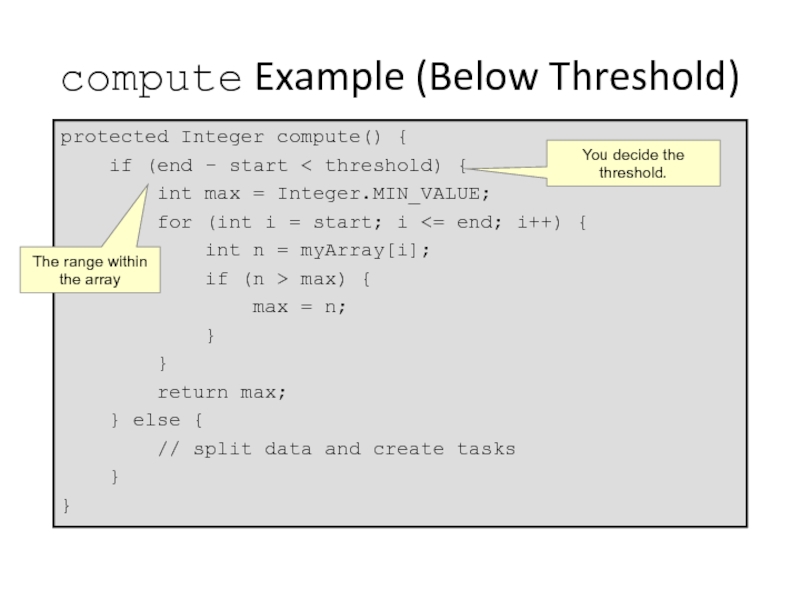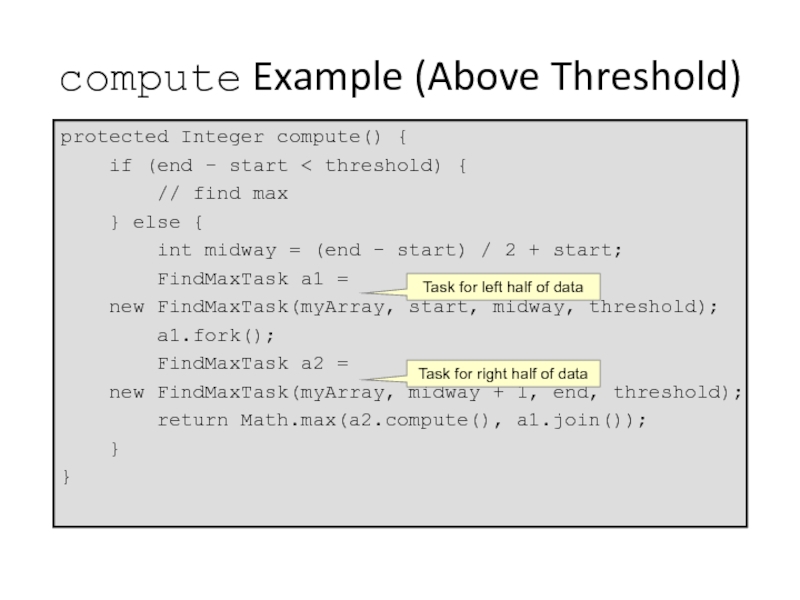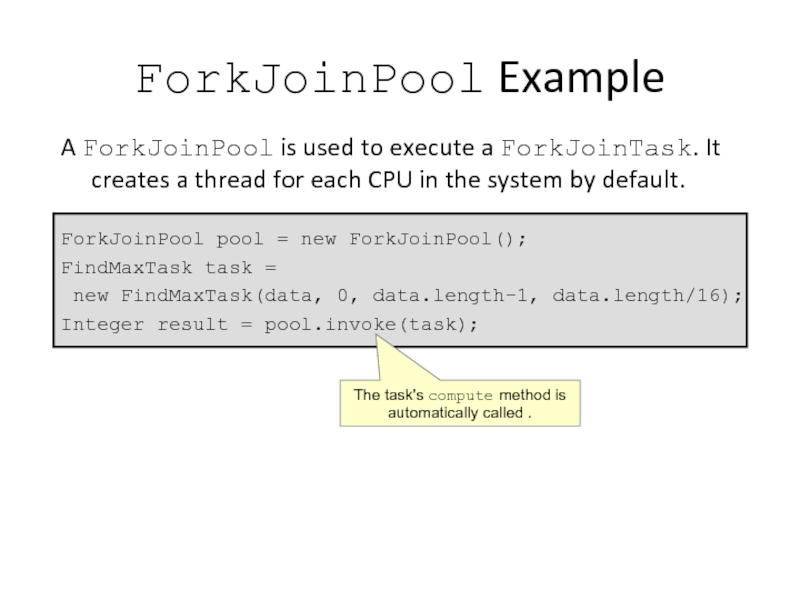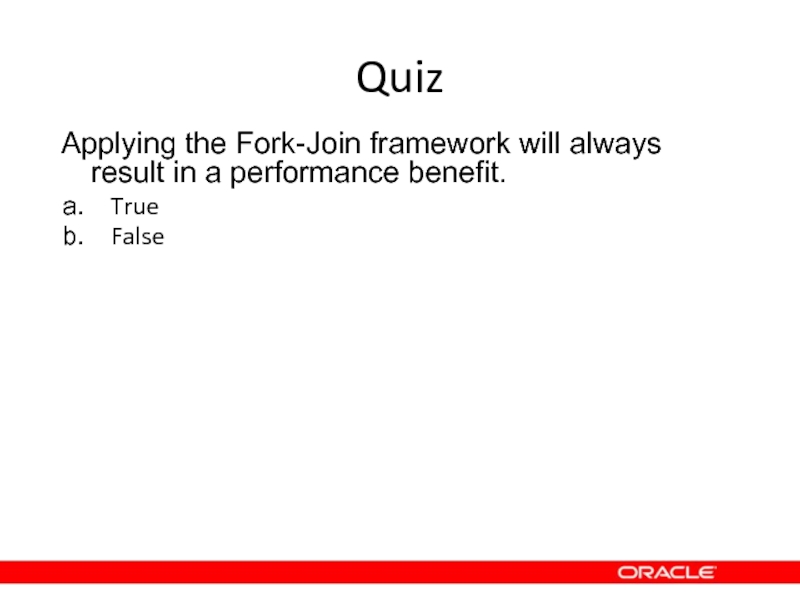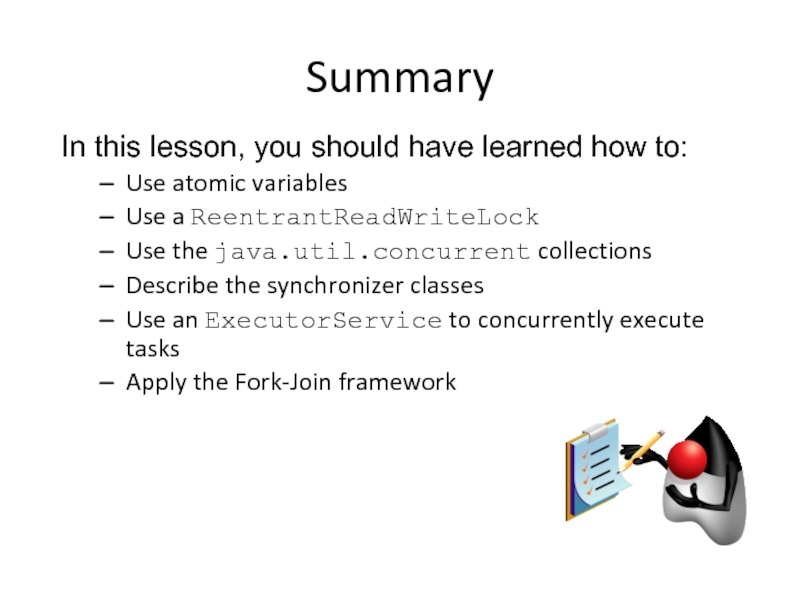Слайд 2Objectives
After completing this lesson, you should be able to:
Use atomic
variables
Use a ReentrantReadWriteLock
Use the java.util.concurrent collections
Describe the synchronizer classes
Use an
ExecutorService to concurrently execute tasks
Apply the Fork-Join framework
Слайд 3The java.util.concurrent Package
Java 5 introduced the java.util.concurrent package, which contains
classes that are useful in concurrent programming. Features include:
Concurrent collections
Synchronization
and locking alternatives
Thread pools
Fixed and dynamic thread count pools available
Parallel divide and conquer (Fork-Join) new in Java 7
Слайд 4The java.util.concurrent.atomic Package
The java.util.concurrent.atomic package contains classes that support lock-free
thread-safe programming on single variables
AtomicInteger ai = new AtomicInteger(5);
if(ai.compareAndSet(5, 42))
{
System.out.println("Replaced 5 with 42");
}
An atomic operation ensures that the current value is 5 and then sets it to 42.
Слайд 5The java.util.concurrent.locks Package
The java.util.concurrent.locks package is a framework for locking
and waiting for conditions that is distinct from built-in synchronization
and monitors.
public class ShoppingCart {
private final ReentrantReadWriteLock rwl =
new ReentrantReadWriteLock();
public void addItem(Object o) {
rwl.writeLock().lock();
// modify shopping cart
rwl.writeLock().unlock();
}
A single writer, multi-reader lock
Write Lock
Слайд 6java.util.concurrent.locks
public String getSummary() {
String
s = "";
rwl.readLock().lock();
// read cart, modify s
rwl.readLock().unlock();
return s;
}
public double getTotal() {
// another read-only method
}
}
All read-only methods can concurrently execute.
Read Lock
Слайд 7Thread-Safe Collections
The java.util collections are not thread-safe. To use collections
in a thread-safe fashion:
Use synchronized code blocks for all access
to a collection if writes are performed
Create a synchronized wrapper using library methods, such as java.util.Collections.synchronizedList(List)
Use the java.util.concurrent collections
Note: Just because a Collection is made thread-safe, this does not make its elements thread-safe.
Слайд 8Quiz
A CopyOnWriteArrayList ensures the thread-safety of any object added to
the List.
True
False
Слайд 9Synchronizers
The java.util.concurrent package provides five classes that aid common special-purpose
synchronization idioms.
Слайд 10java.util.concurrent.CyclicBarrier
The CyclicBarrier is an example of the synchronizer category of
classes provided by java.util.concurrent.
final CyclicBarrier barrier = new CyclicBarrier(2);
new Thread()
{
public void run() {
try {
System.out.println("before await - thread 1");
barrier.await();
System.out.println("after await - thread 1");
} catch (BrokenBarrierException|InterruptedException ex) {
}
}
}.start();
Two threads must await before they can unblock.
May not be reached
Слайд 11High-Level Threading Alternatives
Traditional Thread related APIs can be difficult to
use properly. Alternatives include:
java.util.concurrent.ExecutorService, a higher level mechanism used to
execute tasks
It may create and reuse Thread objects for you.
It allows you to submit work and check on the results in the future.
The Fork-Join framework, a specialized work-stealing ExecutorService new in Java 7
Слайд 12java.util.concurrent.ExecutorService
An ExecutorService is used to execute tasks.
It eliminates the need
to manually create and manage threads.
Tasks might be executed in
parallel depending on the ExecutorService implementation.
Tasks can be:
java.lang.Runnable
java.util.concurrent.Callable
Implementing instances can be obtained with Executors.
ExecutorService es = Executors.newCachedThreadPool();
Слайд 13java.util.concurrent.Callable
The Callable interface:
Defines a task submitted to an ExecutorService
Is similar
in nature to Runnable, but can:
Return a result using generics
Throw
a checked exception
package java.util.concurrent;
public interface Callable {
V call() throws Exception;
}
Слайд 14java.util.concurrent.Future
The Future interface is used to obtain the results from
a Callable’s V call() method.
Future future = es.submit(callable);
//submit many callables
try
{
V result = future.get();
} catch (ExecutionException|InterruptedException ex) {
}
Gets the result of the Callable’s call method (blocks if needed).
ExecutorService controls when the work is done.
If the Callable threw an Exception
Слайд 15Shutting Down an ExecutorService
Shutting down an ExecutorService is important because
its threads are nondaemon threads and will keep your JVM
from shutting down.
es.shutdown();
try {
es.awaitTermination(5, TimeUnit.SECONDS);
} catch (InterruptedException ex) {
System.out.println("Stopped waiting early");
}
If you want to wait for the Callables to finish
Stop accepting new Callables.
Слайд 16Quiz
An ExecutorService will always attempt to use all of the
available CPUs in a system.
True
False
Слайд 17Concurrent I/O
Sequential blocking calls execute over a longer duration of
time than concurrent blocking calls.
Слайд 18A Single-Threaded Network Client
public class SingleThreadClientMain {
public static
void main(String[] args) {
String host =
"localhost";
for (int port = 10000; port < 10010; port++) {
RequestResponse lookup =
new RequestResponse(host, port);
try (Socket sock = new Socket(lookup.host, lookup.port);
Scanner scanner = new Scanner(sock.getInputStream());){
lookup.response = scanner.next();
System.out.println(lookup.host + ":" + lookup.port + " " +
lookup.response);
} catch (NoSuchElementException|IOException ex) {
System.out.println("Error talking to " + host + ":" +
port);
}
}
}
}
Слайд 19A Multithreaded Network Client (Part 1)
public class MultiThreadedClientMain {
public static void main(String[] args) {
//ThreadPool
used to execute Callables
ExecutorService es = Executors.newCachedThreadPool();
//A Map used to connect the request data with the result
Map> callables =
new HashMap<>();
String host = "localhost";
//loop to create and submit a bunch of Callable instances
for (int port = 10000; port < 10010; port++) {
RequestResponse lookup = new RequestResponse(host, port);
NetworkClientCallable callable =
new NetworkClientCallable(lookup);
Future future = es.submit(callable);
callables.put(lookup, future);
}
Слайд 20A Multithreaded Network Client (Part 2)
//Stop
accepting new Callables
es.shutdown();
try {
//Block until all Callables have a chance to finish
es.awaitTermination(5, TimeUnit.SECONDS);
} catch (InterruptedException ex) {
System.out.println("Stopped waiting early");
}
Слайд 21A Multithreaded Network Client (Part 3)
for(RequestResponse
lookup : callables.keySet()) {
Future
future = callables.get(lookup);
try {
lookup = future.get();
System.out.println(lookup.host + ":" + lookup.port + " " +
lookup.response);
} catch (ExecutionException|InterruptedException ex) {
//This is why the callables Map exists
//future.get() fails if the task failed
System.out.println("Error talking to " + lookup.host +
":" + lookup.port);
}
}
}
}
Слайд 22A Multithreaded Network Client (Part 4)
public class RequestResponse {
public String host; //request
public int port; //request
public String response; //response
public RequestResponse(String host, int port) {
this.host = host;
this.port = port;
}
// equals and hashCode
}
Слайд 23A Multithreaded Network Client (Part 5)
public class NetworkClientCallable implements Callable
{
private RequestResponse lookup;
public NetworkClientCallable(RequestResponse
lookup) {
this.lookup = lookup;
}
@Override
public RequestResponse call() throws IOException {
try (Socket sock = new Socket(lookup.host, lookup.port);
Scanner scanner = new Scanner(sock.getInputStream());) {
lookup.response = scanner.next();
return lookup;
}
}
}
Слайд 24Parallelism
Modern systems contain multiple CPUs. Taking advantage of the processing
power in a system requires you to execute tasks in
parallel on multiple CPUs.
Divide and conquer: A task should be divided into subtasks. You should attempt to identify those subtasks that can be executed in parallel.
Some problems can be difficult to execute as parallel tasks.
Some problems are easier. Servers that support multiple clients can use a separate task to handle each client.
Be aware of your hardware. Scheduling too many parallel tasks can negatively impact performance.
Слайд 25Without Parallelism
Modern systems contain multiple CPUs. If you do not
leverage threads in some way, only a portion of your
system’s processing power will be utilized.
Слайд 26Naive Parallelism
A simple parallel solution breaks the data to be
processed into multiple sets. One data set for each CPU
and one thread to process each data set.
Слайд 27The Need for the Fork-Join Framework
Splitting datasets into equal sized
subsets for each thread to process has a couple of
problems. Ideally all CPUs should be fully utilized until the task is finished but:
CPUs may run a different speeds
Non-Java tasks require CPU time and may reduce the time available for a Java thread to spend executing on a CPU
The data being analyzed may require varying amounts of time to process
Слайд 28Work-Stealing
To keep multiple threads busy:
Divide the data to be processed
into a large number of subsets
Assign the data subsets to
a thread’s processing queue
Each thread will have many subsets queued
If a thread finishes all its subsets early,
it can “steal” subsets from
another thread.
Слайд 29A Single-Threaded Example
int[] data = new int[1024 * 1024 *
256]; //1G
for (int i = 0; i < data.length; i++)
{
data[i] = ThreadLocalRandom.current().nextInt();
}
int max = Integer.MIN_VALUE;
for (int value : data) {
if (value > max) {
max = value;
}
}
System.out.println("Max value found:" + max);
A very large dataset
Fill up the array with values.
Sequentially search the array for the largest value.
Слайд 30java.util.concurrent.
ForkJoinTask
A ForkJoinTask object represents a task to be executed.
A task
contains the code and data to be processed. Similar to
a Runnable or Callable.
A huge number of tasks are created and processed by a small number of threads in a Fork-Join pool.
A ForkJoinTask typically creates more ForkJoinTask instances until the data to processed has been subdivided adequately.
Developers typically use the following subclasses:
RecursiveAction: When a task does not need to return a result
RecursiveTask: When a task does need to return a result
Слайд 31RecursiveTask Example
public class FindMaxTask extends RecursiveTask {
private final
int threshold;
private final int[] myArray;
private int
start;
private int end;
public FindMaxTask(int[] myArray, int start, int end, int threshold) {
// copy parameters to fields
}
protected Integer compute() {
// shown later
}
}
Result type of the task
The data to process
Where the work is done. Notice the generic return type.
Слайд 32compute Structure
protected Integer compute() {
if DATA_SMALL_ENOUGH {
PROCESS_DATA
return RESULT;
}
else {
SPLIT_DATA_INTO_LEFT_AND_RIGHT_PARTS
TASK t1 = new TASK(LEFT_DATA);
t1.fork();
TASK t2 = new TASK(RIGHT_DATA);
return COMBINE(t2.compute(), t1.join());
}
}
Block until done
Asynchronously execute
Process in current thread
Слайд 33compute Example (Below Threshold)
protected Integer compute() {
if (end
- start < threshold) {
int max
= Integer.MIN_VALUE;
for (int i = start; i <= end; i++) {
int n = myArray[i];
if (n > max) {
max = n;
}
}
return max;
} else {
// split data and create tasks
}
}
You decide the threshold.
The range within the array
Слайд 34compute Example (Above Threshold)
protected Integer compute() {
if (end
- start < threshold) {
// find
max
} else {
int midway = (end - start) / 2 + start;
FindMaxTask a1 =
new FindMaxTask(myArray, start, midway, threshold);
a1.fork();
FindMaxTask a2 =
new FindMaxTask(myArray, midway + 1, end, threshold);
return Math.max(a2.compute(), a1.join());
}
}
Task for left half of data
Task for right half of data
Слайд 35ForkJoinPool Example
A ForkJoinPool is used to execute a ForkJoinTask. It
creates a thread for each CPU in the system by
default.
ForkJoinPool pool = new ForkJoinPool();
FindMaxTask task =
new FindMaxTask(data, 0, data.length-1, data.length/16);
Integer result = pool.invoke(task);
The task's compute method is automatically called .
Слайд 36Fork-Join Framework Recommendations
Avoid I/O or blocking operations.
Only one thread per
CPU is created by default. Blocking operations would keep you
from utilizing all CPU resources.
Know your hardware.
A Fork-Join solution will perform slower on a one-CPU system than a standard sequential solution.
Some CPUs increase in speed when only using a single core, potentially offsetting any performance gain provided by Fork-Join.
Know your problem.
Many problems have additional overhead if executed in parallel (parallel sorting, for example).
Слайд 37Quiz
Applying the Fork-Join framework will always result in a performance
benefit.
True
False
Слайд 38Summary
In this lesson, you should have learned how to:
Use atomic
variables
Use a ReentrantReadWriteLock
Use the java.util.concurrent collections
Describe the synchronizer classes
Use an
ExecutorService to concurrently execute tasks
Apply the Fork-Join framework
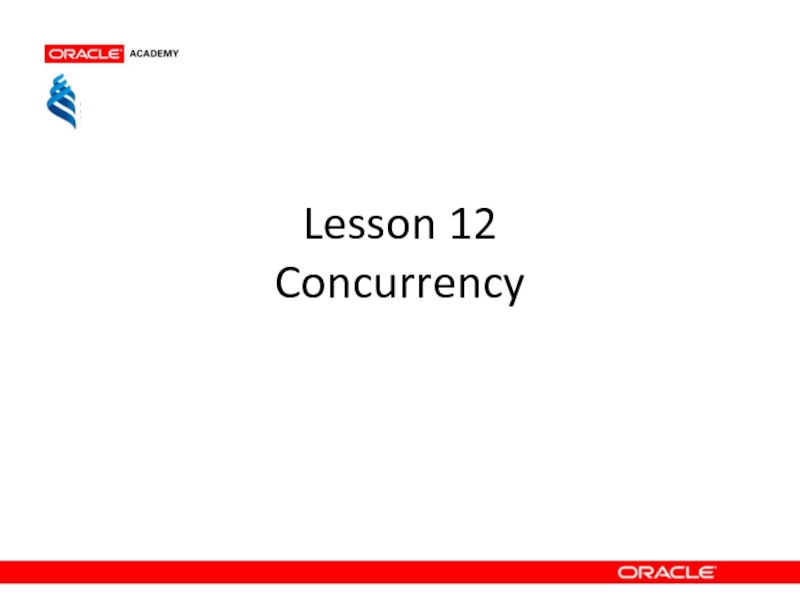
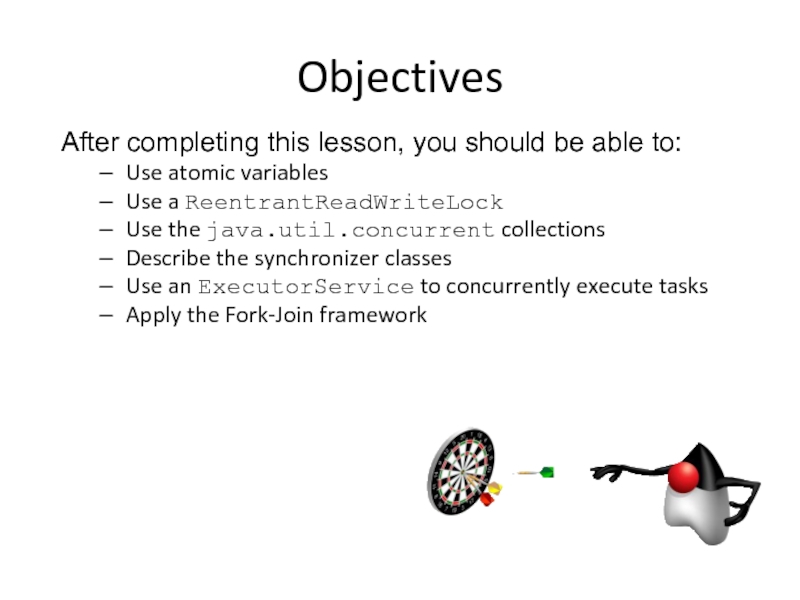
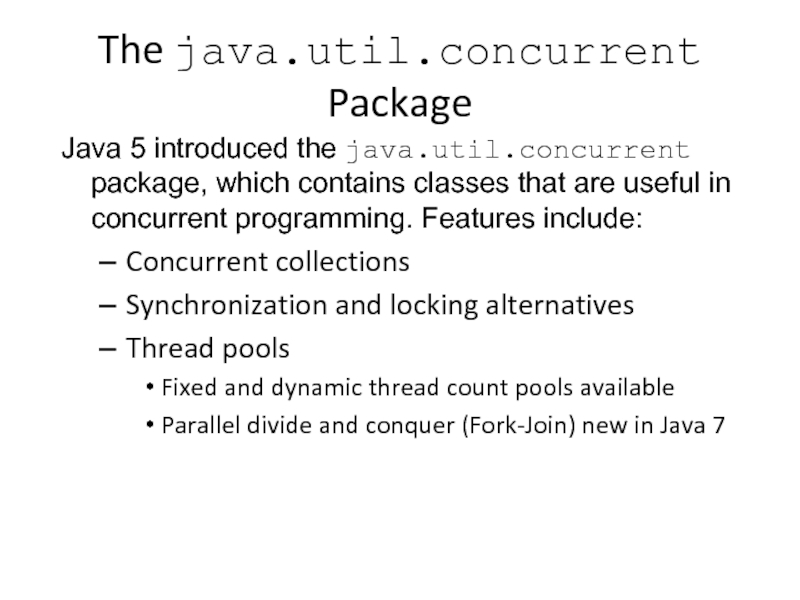
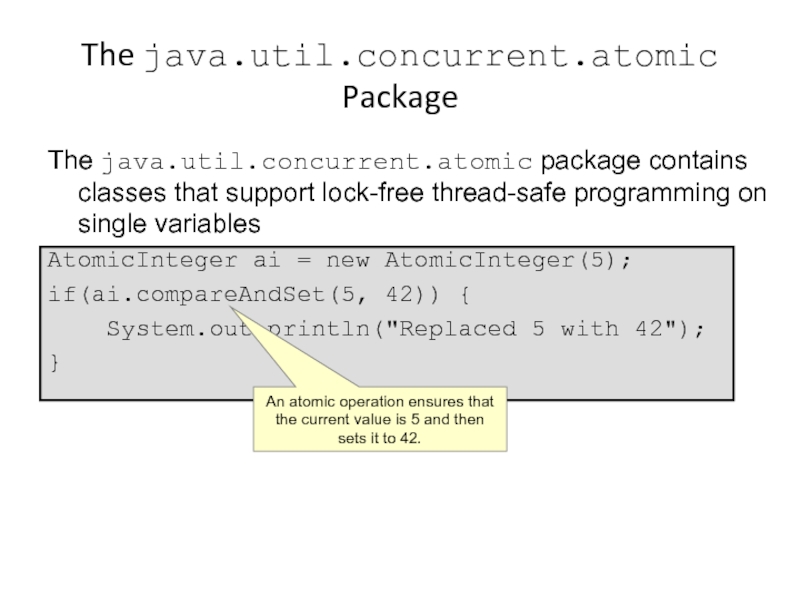

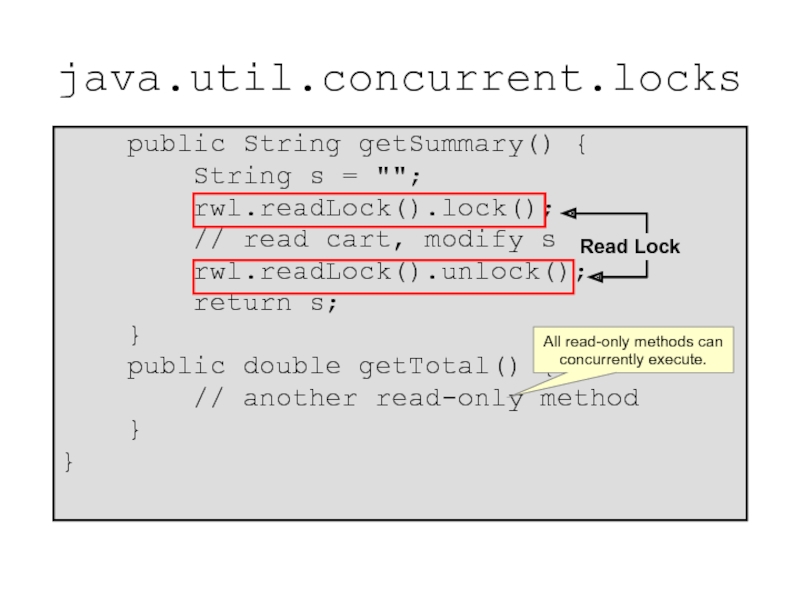
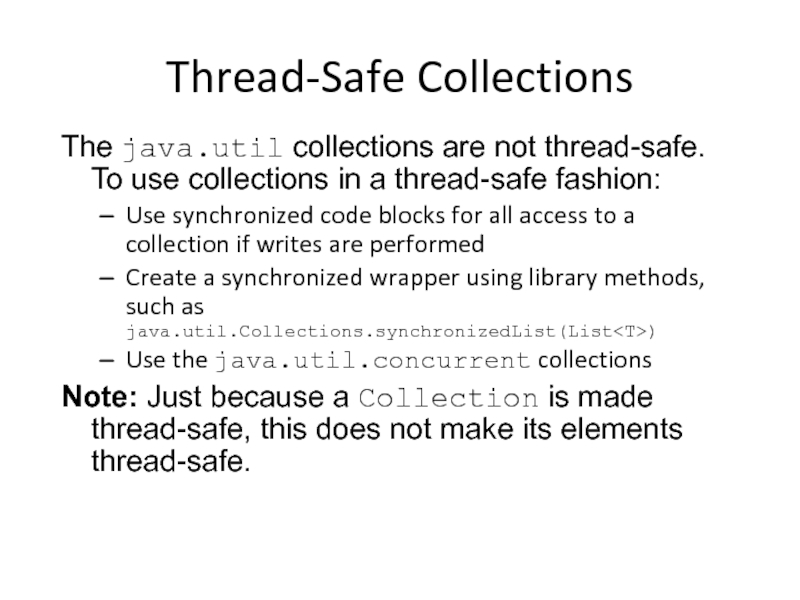
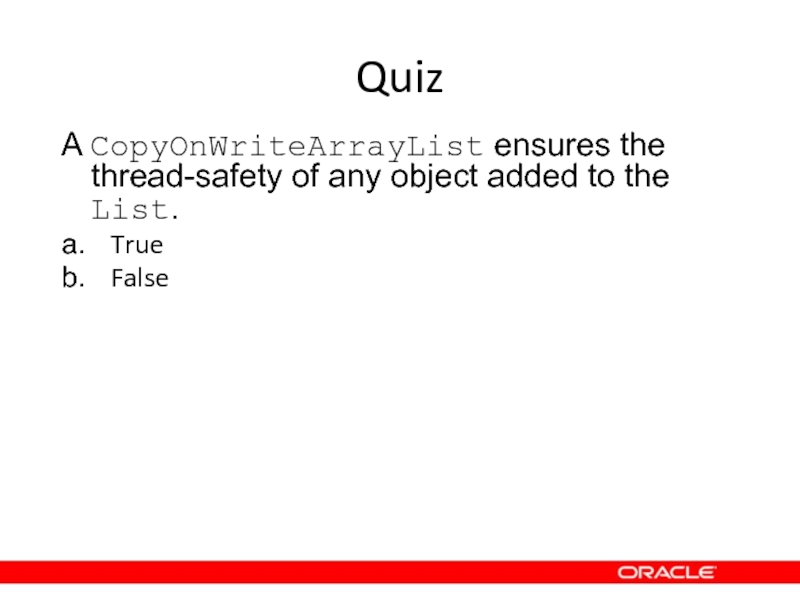
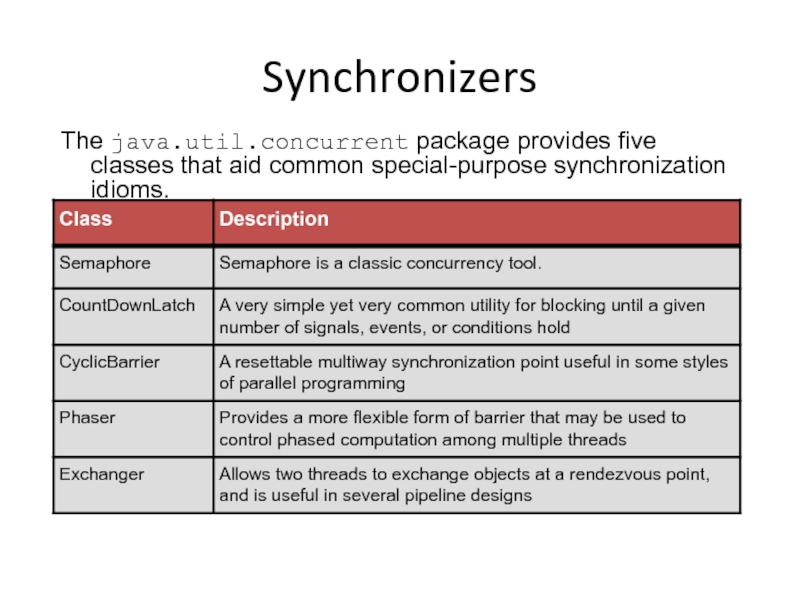
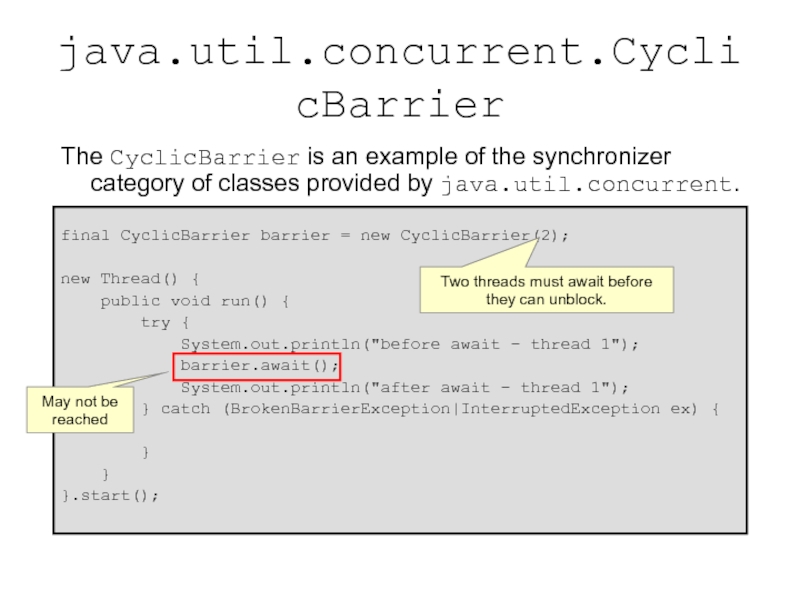
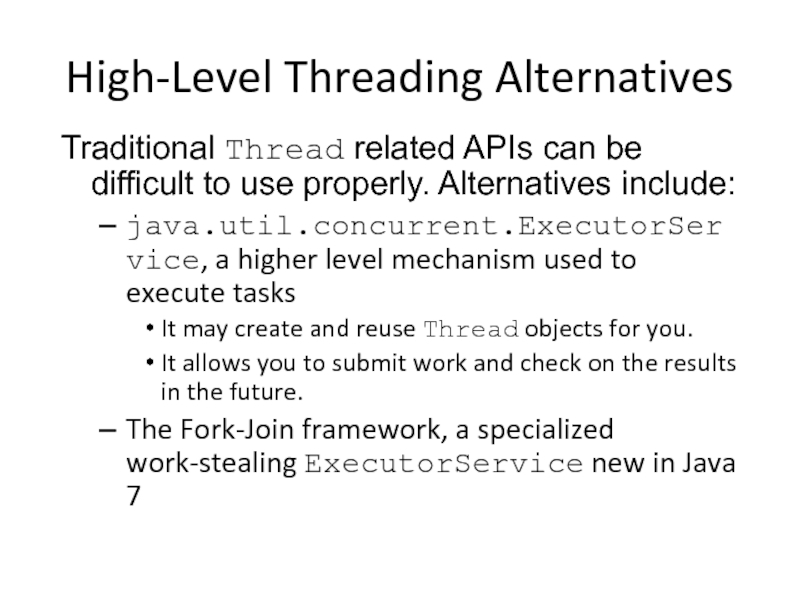
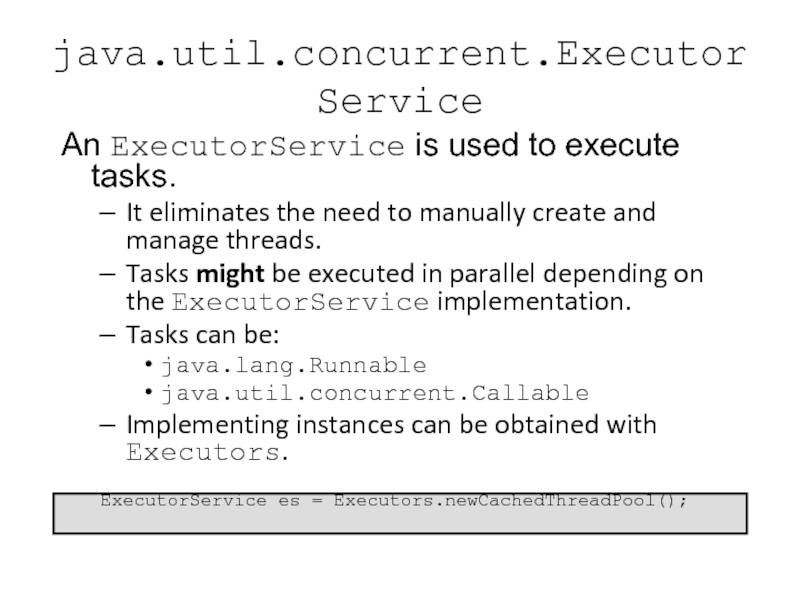
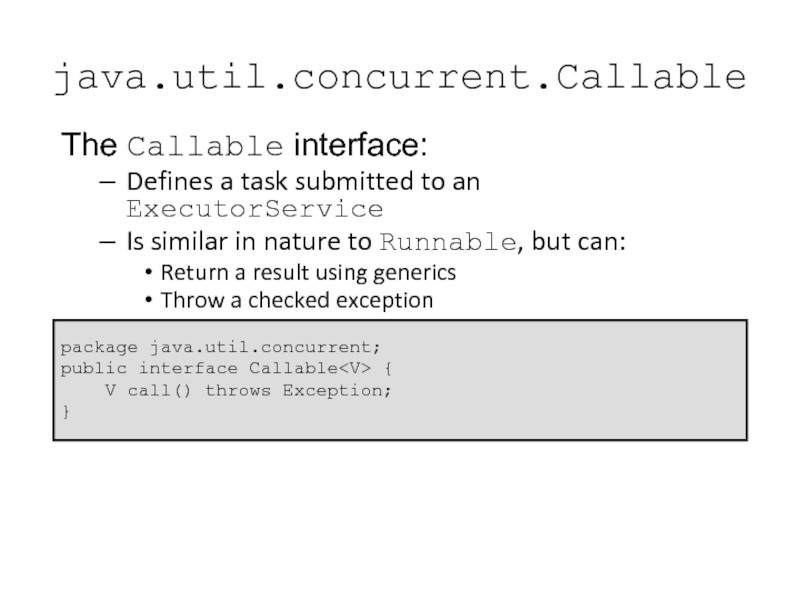
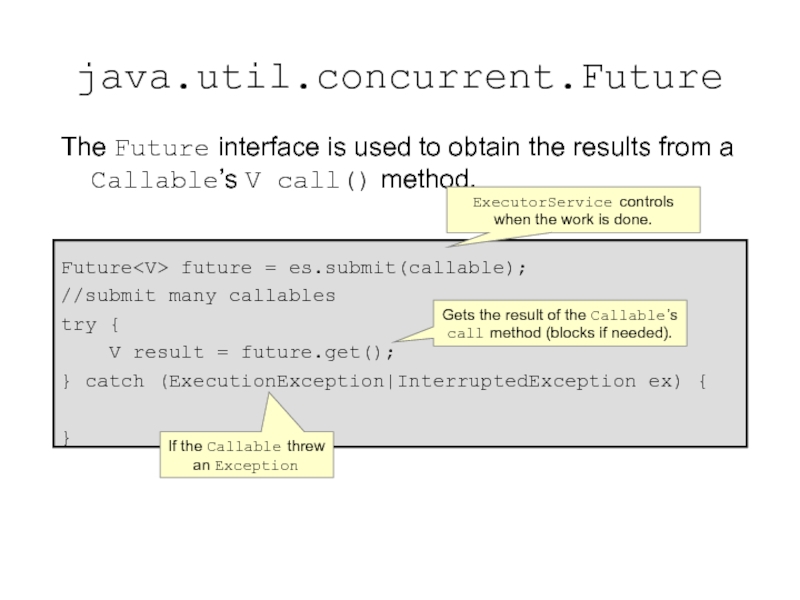
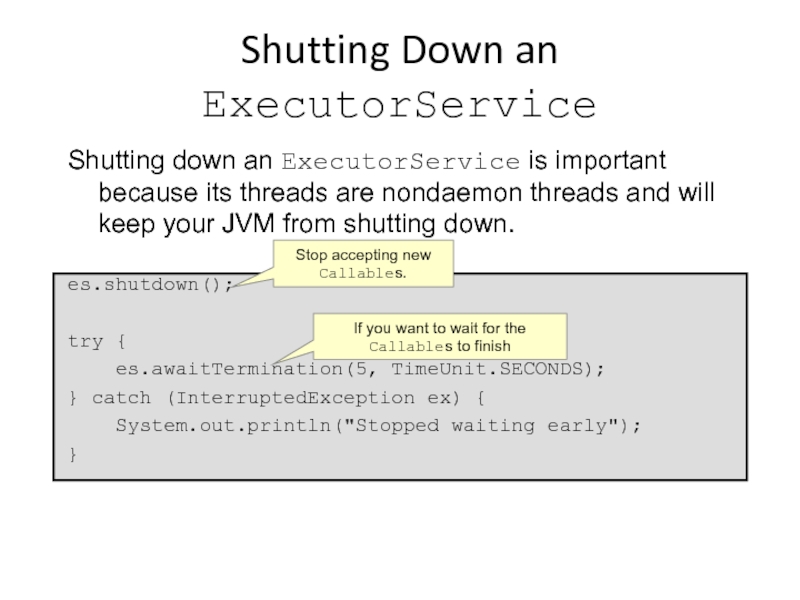
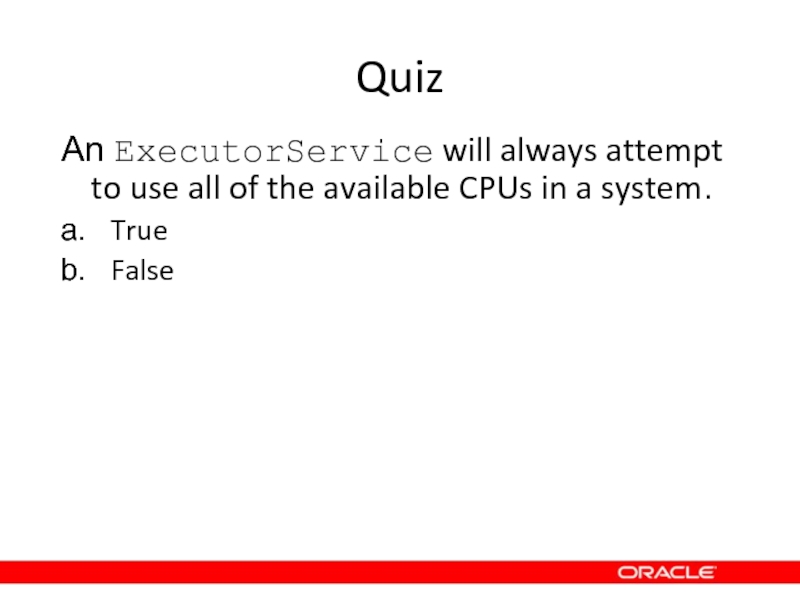
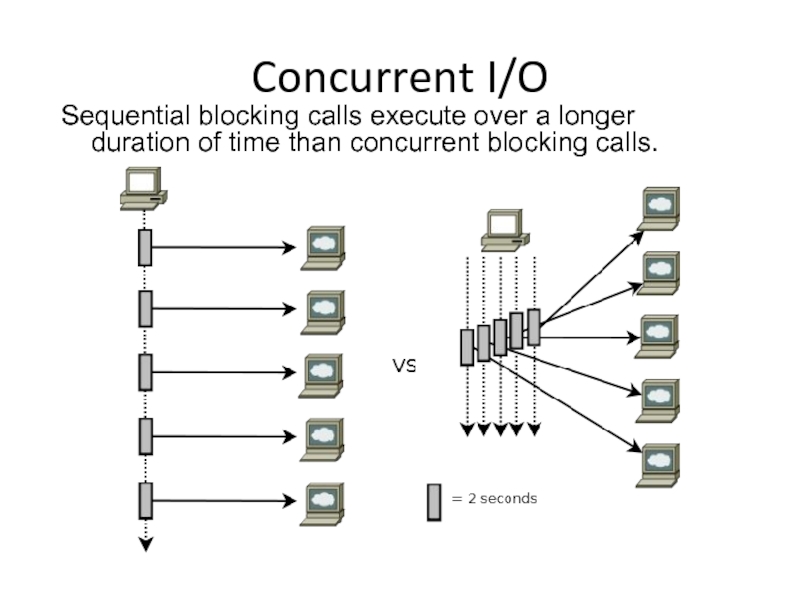
![Lesson 12 Concurrency A Single-Threaded Network Clientpublic class SingleThreadClientMain { public static void main(String[] A Single-Threaded Network Clientpublic class SingleThreadClientMain { public static void main(String[] args) {](/img/tmb/3/224348/553438dca5460cb280176605457be320-800x.jpg)
![Lesson 12 Concurrency A Multithreaded Network Client (Part 1)public class MultiThreadedClientMain { public static A Multithreaded Network Client (Part 1)public class MultiThreadedClientMain { public static void main(String[] args) {](/img/thumbs/acb4d2d470e82a0283f34a6ea260928b-800x.jpg)
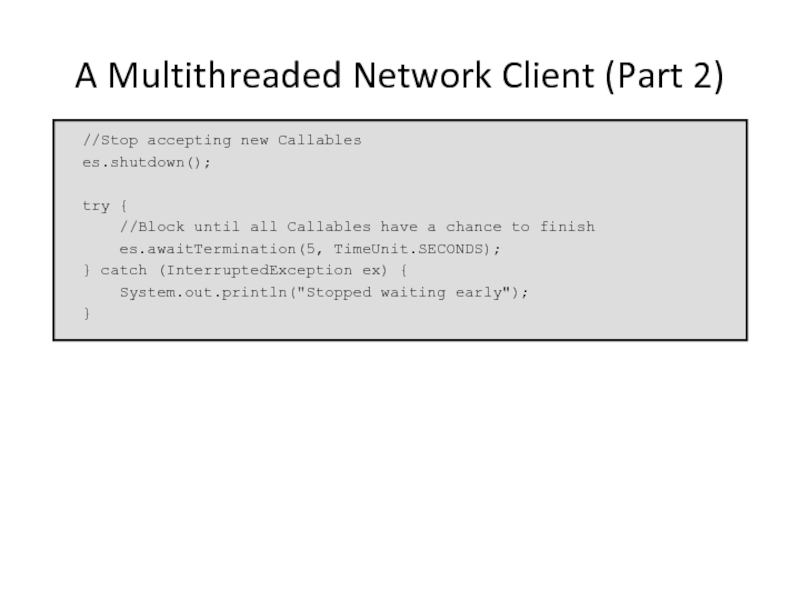
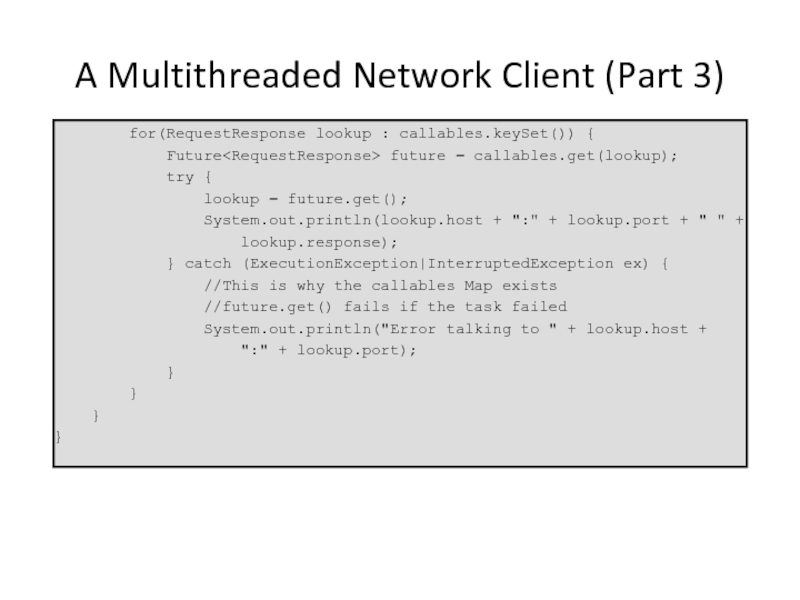
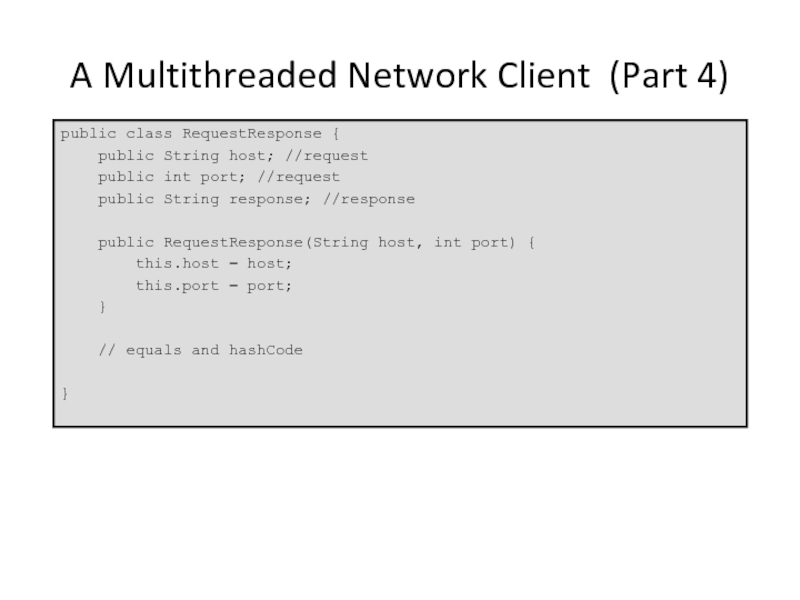
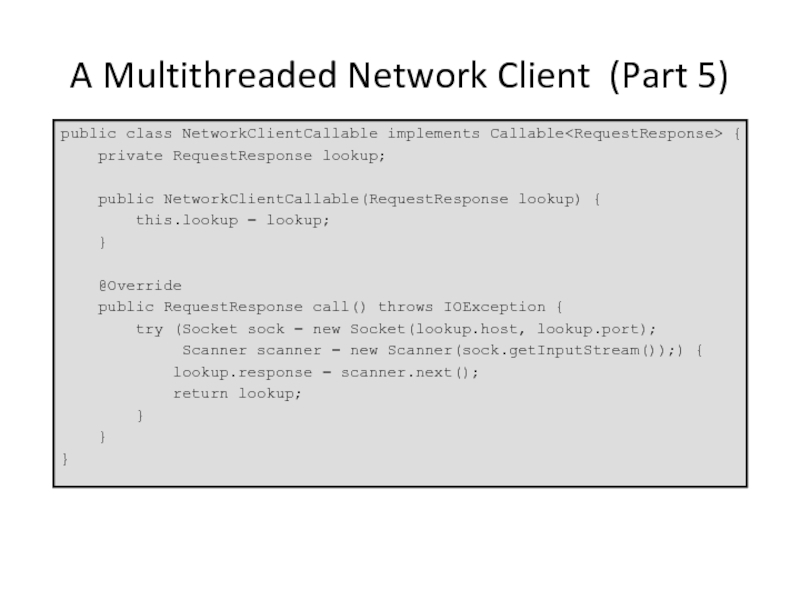
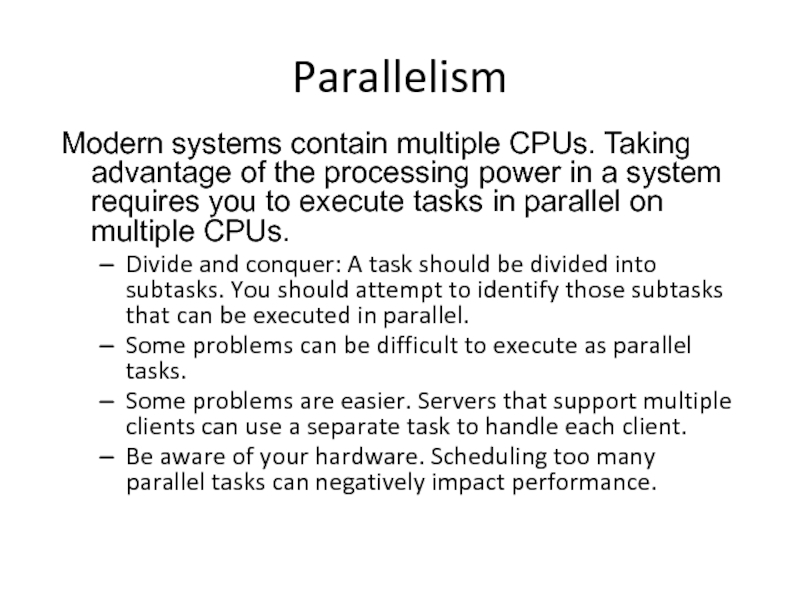
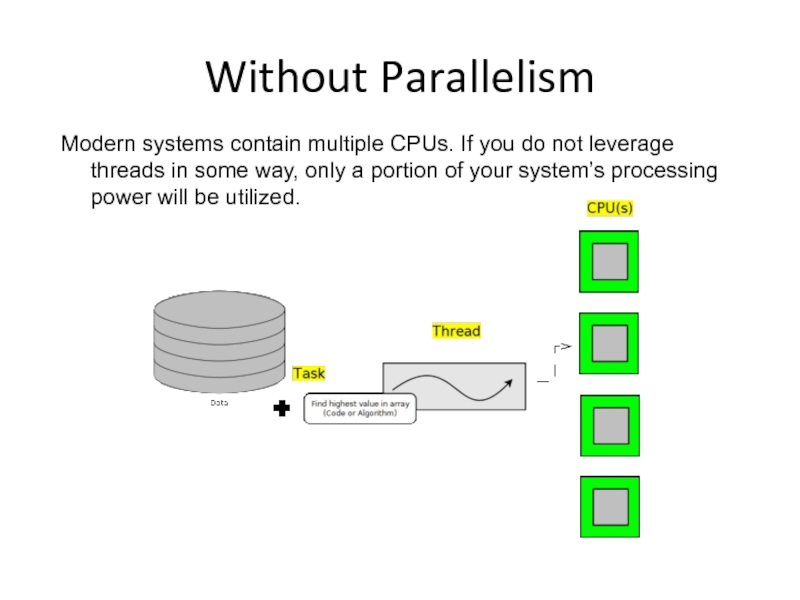
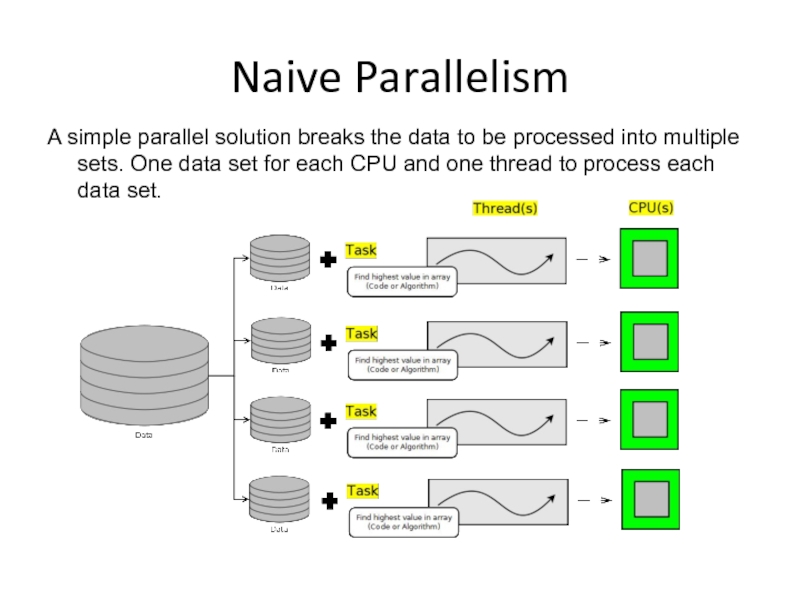
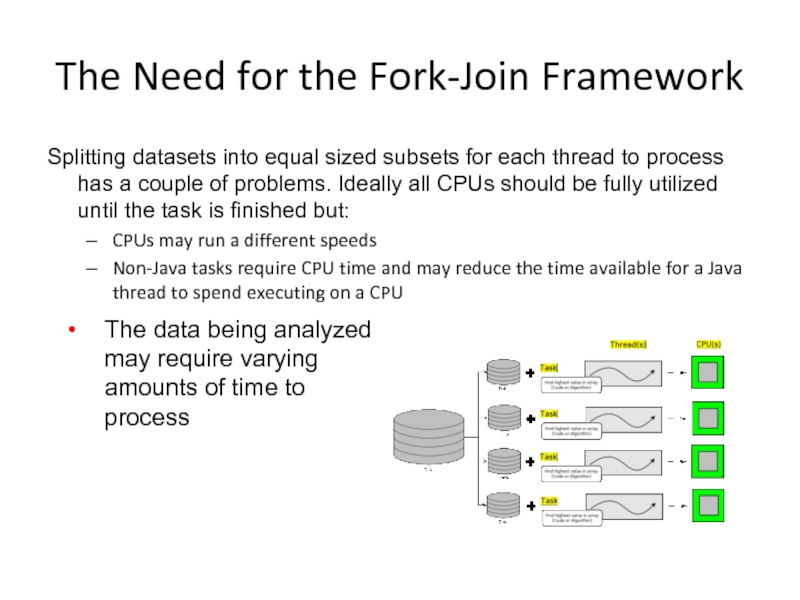
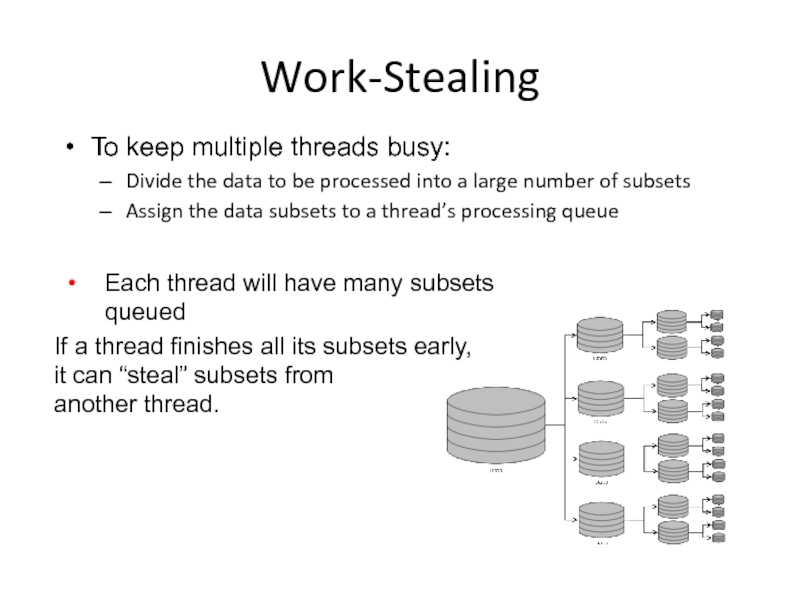
![Lesson 12 Concurrency A Single-Threaded Exampleint[] data = new int[1024 * 1024 * 256]; A Single-Threaded Exampleint[] data = new int[1024 * 1024 * 256]; //1Gfor (int i = 0; i](/img/thumbs/6f765232f2c7d1cc0349ac39275a7386-800x.jpg)
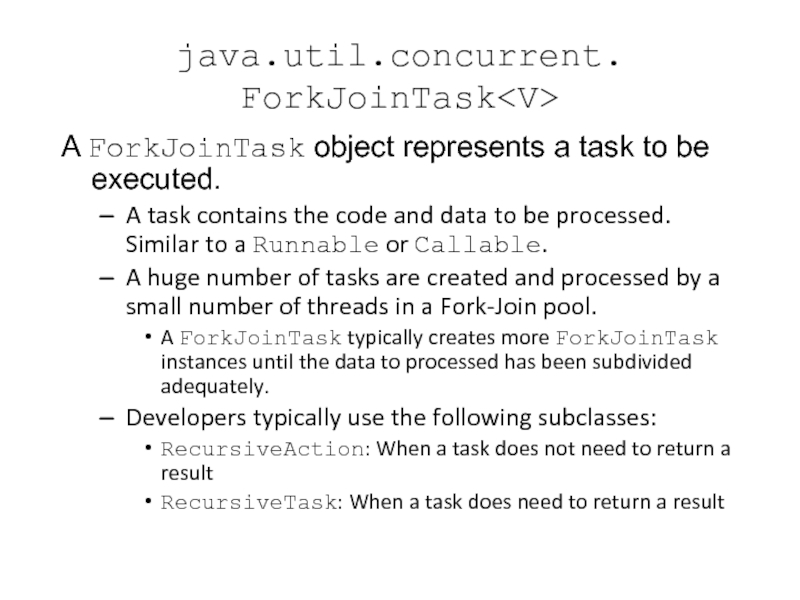
![Lesson 12 Concurrency RecursiveTask Examplepublic class FindMaxTask extends RecursiveTask { private final int threshold; RecursiveTask Examplepublic class FindMaxTask extends RecursiveTask { private final int threshold; private final int[] myArray;](/img/thumbs/cc95bdc5fd4623acea2dc974b8cfc2a3-800x.jpg)

